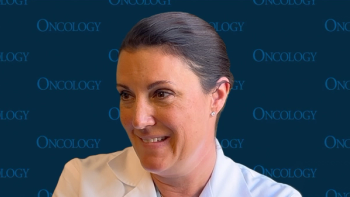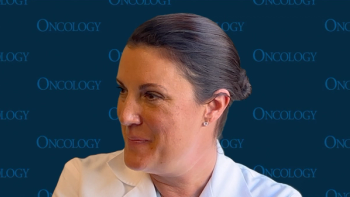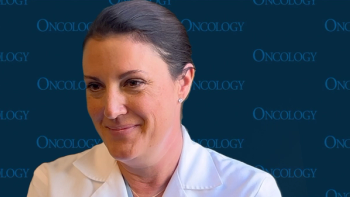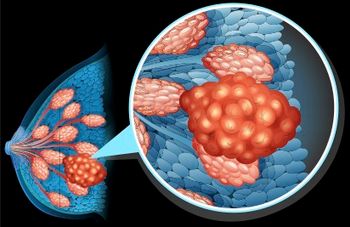
Oncology NEWS International
- Oncology NEWS International Vol 6 No 6
- Volume 6
- Issue 6
Taxol/Adriamycin as First-Line Metastatic Breast Cancer Therapy
ASCO--Doxorubicin (Adriamy-cin) plus paclitaxel (Taxol) used in combination resulted in better overall response rates and longer time-to-treatment failure than either agent used alone as first-line treatment of metastatic breast cancer, George W. Sledge, Jr., MD, of Indiana University School of Medicine, reported at the ASCO meeting.
ASCO--Doxorubicin (Adriamy-cin) plus paclitaxel (Taxol) used in combinationresulted in better overall response rates and longer time-to-treatmentfailure than either agent used alone as first-line treatment of metastaticbreast cancer, George W. Sledge, Jr., MD, of Indiana University Schoolof Medicine, reported at the ASCO meeting.
This randomized phase III intergroup trial, the first to compare doxorubicinand paclitaxel in this setting, included 683 eligible patients with stageIV metastatic breast cancer. "This study is important because it placesa new drug, Taxol, in context," Dr. Sledge said. "It tells usthat this drug is fully the equivalent of the best current drug [doxorubicin]for treating advanced breast cancer."
Doxorubicin (60 mg/m² every 3 weeks) and paclitaxel (175 mg/m²/24hr every 3 weeks) given alone produced equivalent response rates (36% fordoxorubicin; 34% for paclitaxel).
The response rate for the combination (doxorubicin, 50 mg/m², followed4 hours later by paclitaxel, 150 mg/m²/24 hr, plus G-CSF) was significantlybetter at 47%. In the combination, doxorubicin was given for a maximumof eight cycles, whereas paclitaxel could be continued until time of progression.
Median time-to-treatment failure was equal for the single-agent regimens(5.9 months for doxorubicin; 6 months for paclitaxel), but significantlyhigher (8 months) for the combination.
The three arms were equal, however, in median overall survival (18.9,22.2, and 22 months, respectively, for doxorubicin, paclitaxel, and thecombination), and in quality of life measurements. "The more intensivetherapy, in this case the drug combination, did not improve quality orlength of life," Dr. Sledge said.
He pointed out that since patients on the single-agent arms were allowedto cross over to the other single-agent arm at the time of progression,the comparison is, in effect, between the combination therapy and sequentialsingle-agent therapy. Objective responses were similar whether patientscrossed over from doxorubicin to paclitaxel (22%) or from paclitaxel todoxorubicin (20%).
Severe toxicity (grade 4/5) was more common in the paclitaxel-alonegroup (169 patients versus 109 patients on doxorubicin and 135 patientson doxorubicin plus paclitaxel). No greater cardiotox-icity was seen withthe combination than with doxorubicin alone.
"Doxorubicin is no longer the single most effective agent in metastaticbreast cancer," Gabriel N. Hortobagyi, MD, of M.D. Anderson, saidin his commentary at the plenary session presentation. "Furthermore,"he added, "this trial established for the first time that patientswhose disease is refractory to a taxane still have sensitivity to doxorubicin."
Dr. Hortobagyi called the combination regimen "a reasonable choicefor treating metastatic breast cancer," and he acknowledged Dr. Sledgeand his colleagues for "providing one more important step in the systematicprocess of incorporating a new agent into the management of breast cancer."
Articles in this issue
over 28 years ago
Studies of Counselings' Impact on Survival Challengedover 28 years ago
Telomerase Activity Potential Marker for Bladder Cancerover 28 years ago
Writing Genetic Testing Guidelines Complex Endeavorover 28 years ago
AACR Meeting Sees Growth Spurt in Telomerase Researchover 28 years ago
DDT Appears to Activate Human Estrogen Receptorsover 28 years ago
Studies Highlight Role of bcl-2 Gene in Programmed Cell Deathover 28 years ago
Efficacy of BCG Maintenance in Bladder Cancer Is Confirmedover 28 years ago
Surgery Seen as Adjunct to Chemo in Some Invasive Breast Cancersover 28 years ago
Traveling Exhibit of Cancer Educational ResourcesNewsletter
Stay up to date on recent advances in the multidisciplinary approach to cancer.


















































































